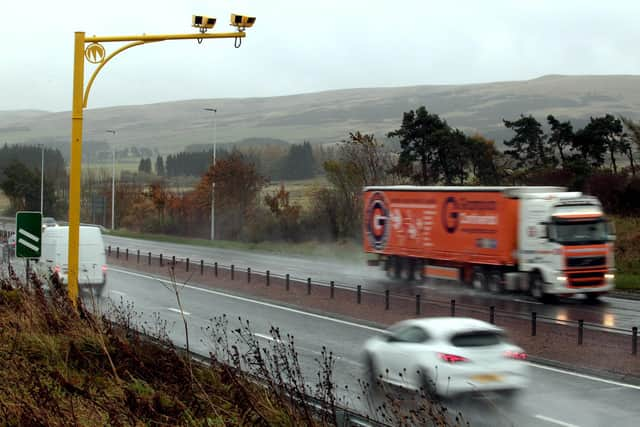Drivers risking fines and crashes by ignoring temporary speed limits – Alastair Dalton
But what I find equally aggravating is those drivers who blithely ignore temporary lower limits and plough through regardless.
They are even worse than those motorists who fail to keep up to the speed limit of 60mph on an uncongested open road only to also fail to slow down when they enter a 30mph zone, perhaps in a village.
Advertisement
Hide AdAdvertisement
Hide AdMy recent experience concerns the former category, where a 40mph limit suddenly appeared on a 70mph motorway, but few fellow drivers seemed to take any notice.
This happened last weekend on the M80 south of Stirling, despite there being no sign of roadworks, just a line of bollards along the hard shoulder and the other lanes clear.
But such was the lack of vehicles around me slowing to the lower limit, it crossed my mind that I risked someone crashing into the back of me as I braked.
At least there was a black and white de-restriction sign where the speed limit ended.
On occasion, I have driven for what seemed miles before realising that that sign was missing – and nobody being sure where the lower limit ended.


However, that’s not the only speed limit quandary likely to infuriate motorists.
Some sections of motorway, such as the last few miles of the M80 into Glasgow, have a permanent lower limit of 50mph.
That does not appear to be enforced by average speed or any other permanent cameras, so what happens? Virtually no one drives at 50mph.
Advertisement
Hide AdAdvertisement
Hide AdWhat to do – keep up with the traffic and risk a fine, or stick to the limit and risk a collision with an unwary speeder?
The same goes for stretches of busy dual carriageway with 30mph limits, such as on the approaches to the Clyde Tunnel in Glasgow.
I’ve only been stopped for speeding once – doing about 80mph on a 70mph dual carriageway section of the A1 in East Lothian.
The police officers warned me about speeding, but didn’t give me a ticket.
Yet why do I feel there’s less likelihood of me being caught driving at ten miles above the limit on the two other roads I’ve mentioned, when, all things being equal, I would have exceeded their limits by a proportionately greater amount and should potentially face a higher penalty?
If I had continued at 70mph through that 40mph limit on the M80 I mentioned at the start, arguably that’s an even bigger contravention with more severe consequences.
It got me thinking about drivers’ rights in a shared environment like a major road.
Why should they be allowed to control their own upper speed?
Advertisement
Hide AdAdvertisement
Hide AdCould technology be developed to remotely impose a maximum speed on vehicles, like the speed limiter fitted to many models which drivers can turn on voluntarily?
It’s possible for electric rental bikes, such as in the Stirling scheme, and for electric scooters in different parts of city centres.
Of course, the practical answer lies with automated vehicles, where effectively someone, or rather something, else does the driving.
In the meantime, will we just have to rely on police and cameras for that speed “control”?
A message from the Editor:
Thank you for reading this article. We're more reliant on your support than ever as the shift in consumer habits brought about by coronavirus impacts our advertisers.
If you haven't already, please consider supporting our trusted, fact-checked journalism by taking out a digital subscription.
Comments
Want to join the conversation? Please or to comment on this article.
